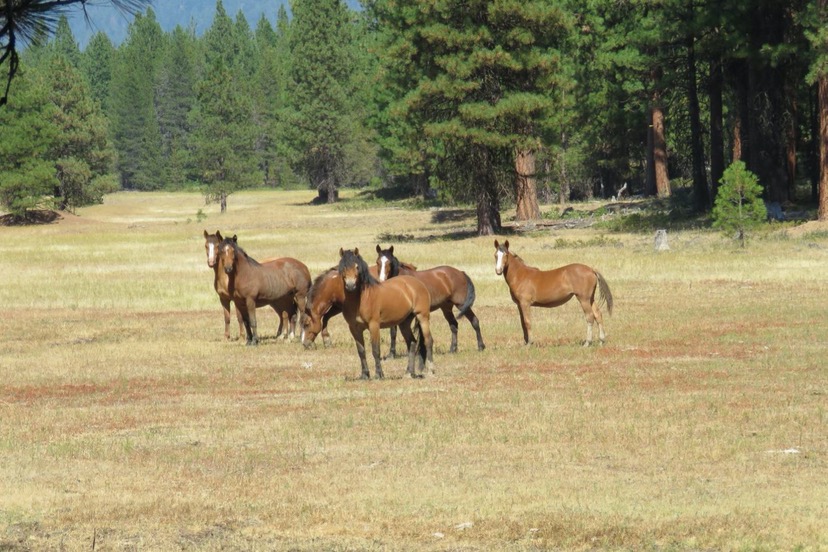By William E. Simpson II
Native species American wild horses evolved on the North American continent about 55 million years ago. So, it’s no wonder that unlike invasive species — cattle and sheep — wild horses have critically important, evolved grazing functions and symbiosis with North American flora and fauna.
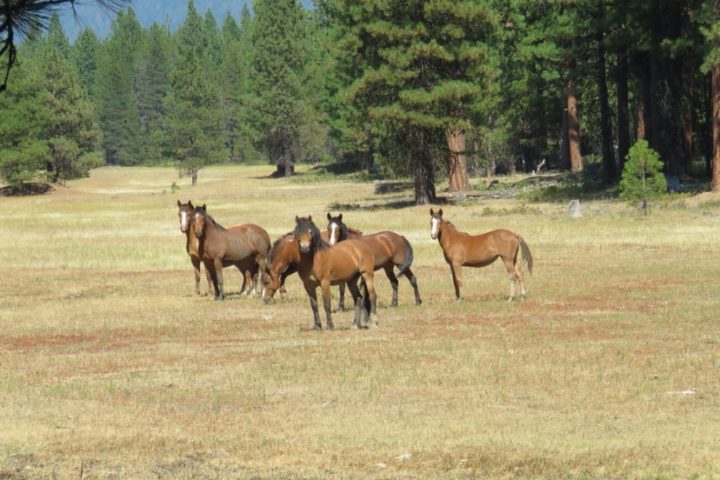
Wild horses are nature’s reseeding experts
In a recent article by Travis Duncan, published in the Pagosa Daily Post titled, ‘FIELD NOTES: Lessons Learned from Colorado Wildfires, Part Two’, we learn that the Bureau of Land Management (BLM) is having difficulties in reseeding and restoring wildfire damaged public lands.
It turns out that nature already has that figured out. The only problem is the BLM is too myopic in their approach to look and see how nature does it so perfectly.
Unlike ruminants (cattle and sheep) which have complex stomachs that digest virtually all the native plant seeds they eat, wild horses have a single stomach and pass virtually all the native plant and grass seeds they eat back onto the ground in their nutrient- and micro-biome-rich droppings, which restore wildfire damaged soils. The droppings of wild horses provide a perfect humus substrate for the enclosed native seeds to germinate and grow.
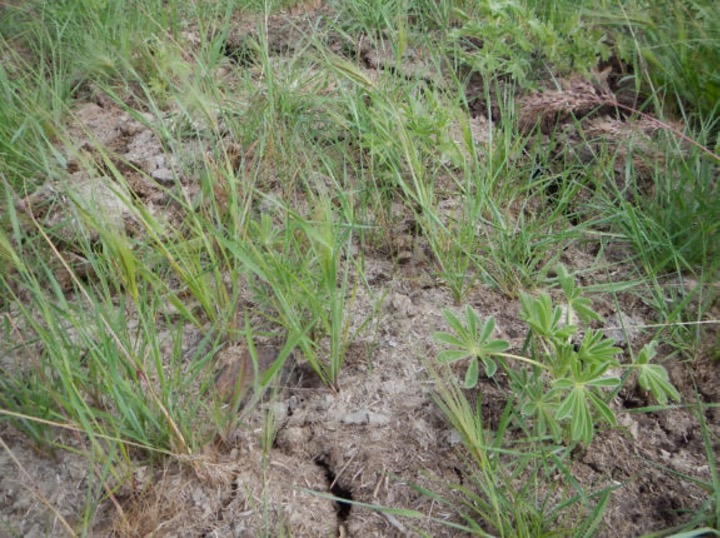
In fact, I believe I may have pioneered the use of this evolved wild horse trait on my own ranch, to spread the seeds of beneficial flora by feeding the local horses such seeds at feeding stations.
Teeth And hooves matter when restoring wildfire-damaged land
Few people actually study the anatomy and morphology of the large-bodied herbivores that are grazing public lands and wilderness areas. These studies are critically important in regard to intelligent land management, especially in the restoration of wildfire damaged wilderness lands.
Unlike cattle, which only have bottom front teeth, wild horses have top and bottom teeth (incisors), which cleanly cuts through the vegetative materials they graze.
Because cattle have no top front incisors, they have a long prehensile tongue that is used to wrap-around and help pull grasses over their bottom front teeth. The result is that cattle tend to uproot some plants and grasses as they graze.


Hoof Anatomy: The impact on post-wildfire soils
The evolved hoof of a native species American wild horse has a much greater surface area in proportion to body weight than do invasive species cattle.
After 55-million years of evolution on the North American continent, the horse’s hoof is evolved to be in perfect ecological harmony with the North American landscape.
NOTE: The photos below show cow claw and horse hoof penetration depths in a native pasture. They were all taken in the same immediate area (by the author) where cattle and horses had walked in a native pasture on the same morning.
Here are the simple mechanics of the evolutionary hoof design (difference) between of horses of North America, and cattle (evolved in Africa), and how each design uniquely impacts the soils in our North American forests, range-lands and riparian areas.

The photo above shows the underside of a cow’s hoof, which as we see, has what are termed as pointed claws. Like the point of a pick-axe tool, the points on these cow claws are very effective at penetrating deeply into soils, especially soft or wet soils. We also note that these claws present a relatively small surface area (pounds/square inch loading) upon which the entire weight of the cow is supported. And this point is obvious on its face.
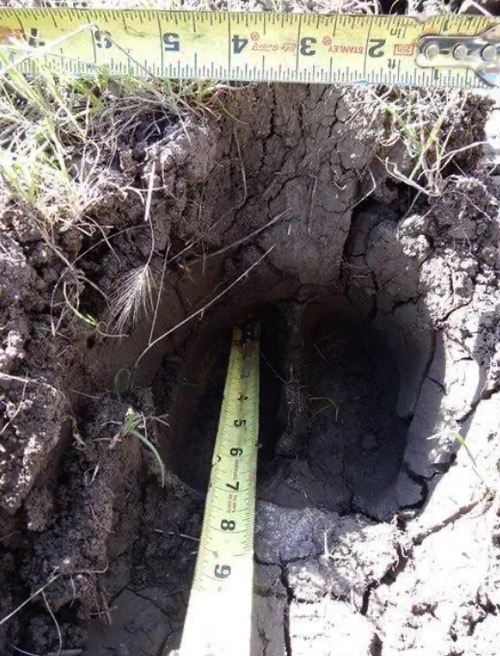
The photo above is an example of what a cow’s claw does in soft pasture as a result of the shape and high ground loading (weight/surface area of claws). As we see, the cow that made this imprint (weight est. 800-900 pounds) penetrated the soil at least five inches deep.
Now we turn to the design and effect of the horse’s hoof on soils.
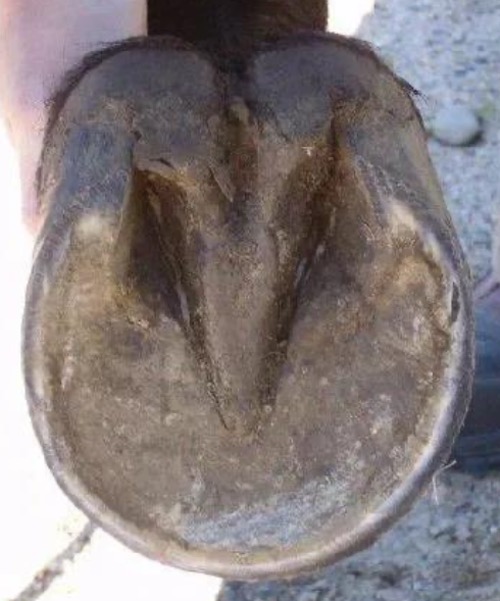
In the photo above we see the underside of a horse’s hoof. It is distinctly different from the cow’s claw in many ways that protect the soils where they tread. First off, the shape is as we see rounded and the surface area is relatively large (lower ground loading in pounds/square inch). The hoof is dished-in on the underside (concave) and that shape tends to trap water and air under the hoof and allows it to ‘float’ hydraulically on the soil instead of piercing the soil like the pick-shaped cow claw.
As we see, the hoof has a lot of surface area compared to the cow claw, and that greater surface area distributes the weight of the horse over more area on the soil, which limits the penetration of a horse’s hoof into the soil. Thus we have less soils disturbance via the significantly lower ground loading as measured in pounds per square inch (PSI).
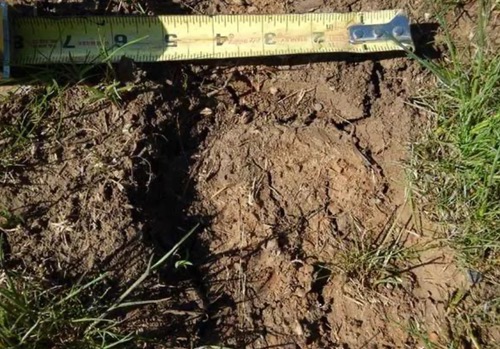
In the photo above we clearly see the horse hoof makes an impression in the soil of less than one-inch deep (same area/soil which contained cow imprints). The horse that made this imprint in the photo above weighed about 800-900 pounds (similar to the weight of a cow), which is a typical weight for an adult wild horse.
Deadly brain disease that infects deer, cattle, sheep and humans
Chronic wasting disease (‘CWD’) is a prion (protein) based disease in cervids (deer, elk, etc.), which means there is no virus or bacteria involved. It is 100% fatal in all the species that can contract this disease, including humans.
CWD is spreading fast and is a serious concern for wildlife managers, some of who are calling the disease ‘Zombie Deer Disease’.
When this prion disease infects a human is it called Creutzfeldt-Jakob disease (CJD), a rapidly progressive, invariably fatal neurodegenerative disorder believed to be caused by an abnormal isoform of a cellular glycoprotein known as the prion protein. Infection with this disease leads to death in humans, usually within 1 year of onset of illness.
When cattle contract this fatal disease, it’s called Mad-Cow disease or ‘BSE’ and in sheep and goats it’s called Scrapie.
Of great interest is the fact that wild horses have an evolved resistance to this prion disease, and their grazing of wilderness areas may among other benefits, help curtail the spread of CWD disease to other native herbivores.
The following is a quote from an official letter I received from Dr. Mark Zabel at the Prion Research Center:
“While prion diseases affect many mammalian species, scientists have shown that equine species are extremely resistant to prion disease. This observation supports the idea of deploying wild horses into CWD endemic habitats to graze and consume a potentially significant source of environmental CWD prions, preventing consumption by CWD susceptible cervids.”
Since the large geographical distribution of CWD limits options for controlling its further spread, wild horses that are naturally resistant to CWD and consume huge amounts of forage could represent one of the few viable means of stemming the tide of CWD sweeping across the continent. Given the amounts of vegetative materials that can be consumed daily by a single wild horse (est. 30lbs/adult animal), equids may provide a potential solution to interrupt potential CWD vectors, while also aid in reducing dry vegetative materials that kindle wildfires.
Data accumulated through numerous studies correlate frequency, severity and duration of wildfires with a reduction or absence of large herbivores. Wild horse grazing would have the additional benefit of reducing brush and tinder responsible for igniting vast forest fires we see consuming landscapes and threatening homes and communities across the west every year. It certainly represents an idea that warrants further consideration. I support the implementation of a pilot study to explore this idea further.
One opportunity could be to use of some or all of the approximately 40,000 wild horses — currently being held in corrals by the BLM — for this purpose…
William E. Simpson II is a naturalist, author, and conservationist living in the Soda Mountain wilderness area among the wild horses that he studies. More about William at www.WHFB.us

